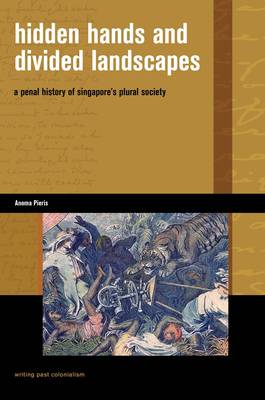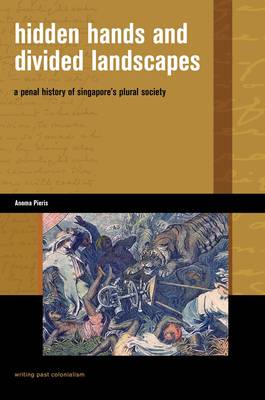
- Retrait gratuit dans votre magasin Club
- 7.000.000 titres dans notre catalogue
- Payer en toute sécurité
- Toujours un magasin près de chez vous
- Retrait gratuit dans votre magasin Club
- 7.000.0000 titres dans notre catalogue
- Payer en toute sécurité
- Toujours un magasin près de chez vous
Description
During the nineteenth century, the colonial Straits Settlements of Singapore, Penang, and Melaka were established as free ports of British trade in Southeast Asia and proved attractive to large numbers of regional migrants. Following the abolishment of slavery in 1833, the Straits government transported convicts from the East India Company's Indian presidencies to the settlements as a source of inexpensive labor. The prison became the primary experimental site for the colonial plural society and convicts were graduated by race and the labor needed for urban construction. Hidden Hands and Divided Landscapes investigates how a political system aimed at managing ethnic communities in the larger material context of the colonial urban project was first imagined and tested through the physical segregation of the colonial prison. It relates the story of a city, Singapore, and a contemporary city-state whose plural society has its origins in these historical divisions.
A description of the evolution of the ideal plan for a plural city across the three settlements is followed by a detailed look at Singapore's colonial prison. Chapters trace the prison's development and its dissolution across the urban landscape through the penal labor system. The author demonstrates the way in which racial politics were inscribed spatially in the division of penal facilities and how the map of the city was reconfigured through convict labor. Later chapters describe penal resistance first through intimate stories of penal life and then through a discussion of organized resistance in festival riots. Eventually, the plural city ideal collapsed into the hegemonic urban form of the citadel, where a quite different military vision of the city became evident. Hidden Hands and Divided Landscapes is a fascinating and thoroughly original study in urban history and the making of multiethnic society in Singapore. It will compel readers to rethink the ways in which colonial urban history, postcolonial urbanism, and governance have been theorized by scholars and represented by governments.Spécifications
Parties prenantes
- Auteur(s) :
- Editeur:
Contenu
- Nombre de pages :
- 416
- Langue:
- Anglais
- Collection :
Caractéristiques
- EAN:
- 9780824832216
- Date de parution :
- 28-02-09
- Format:
- Livre relié
- Format numérique:
- Genaaid
- Dimensions :
- 160 mm x 236 mm
- Poids :
- 657 g

Les avis
Nous publions uniquement les avis qui respectent les conditions requises. Consultez nos conditions pour les avis.






